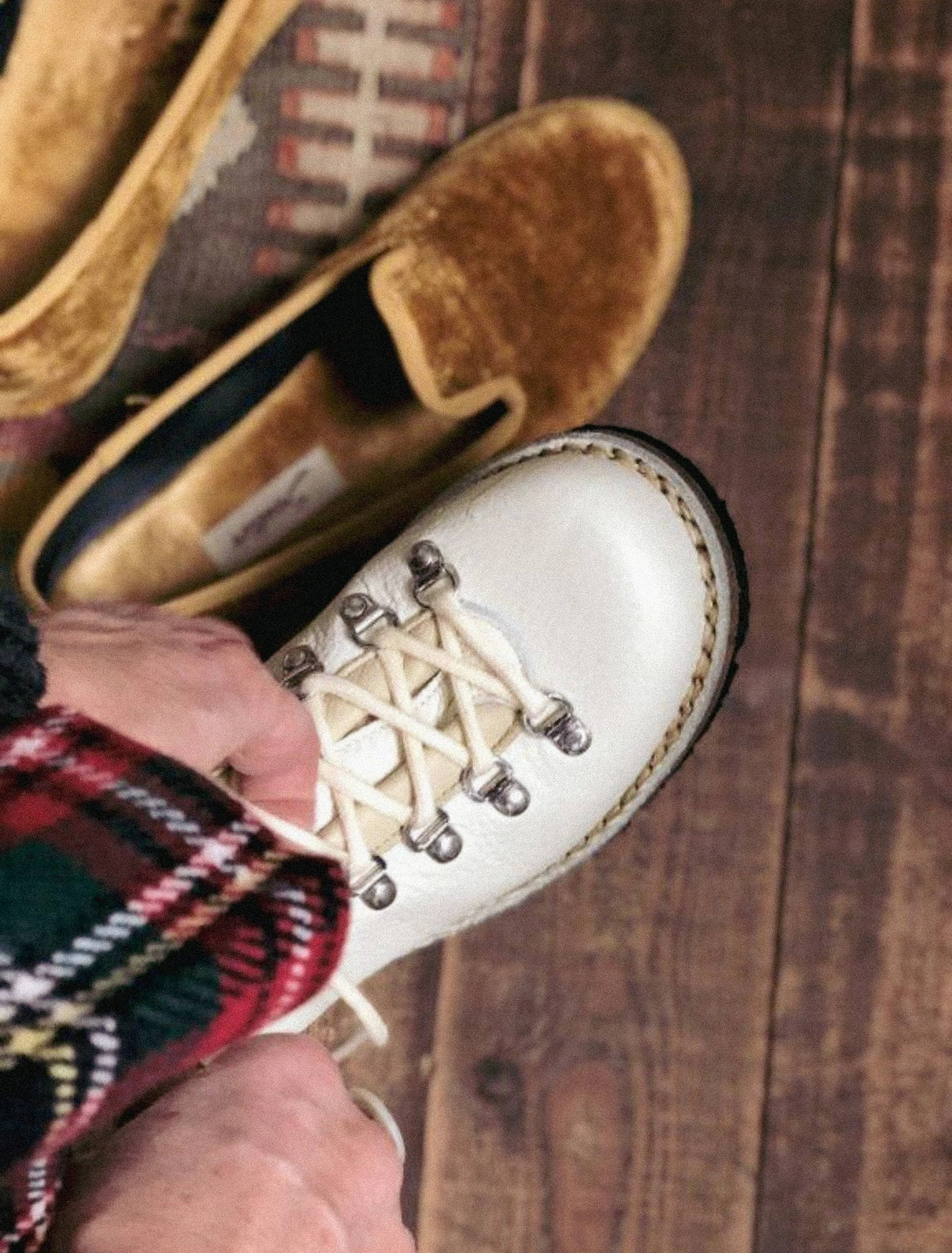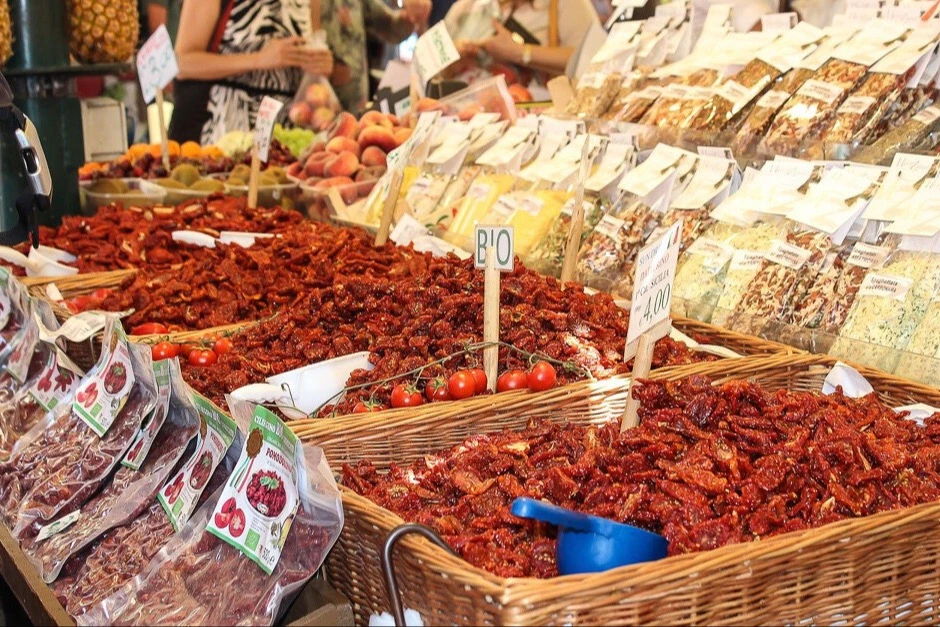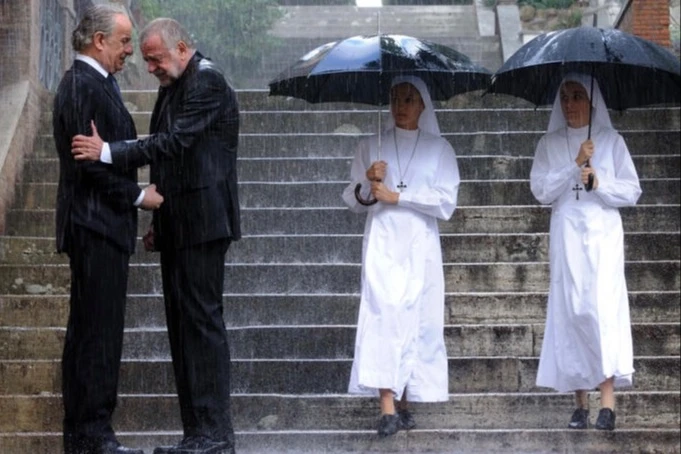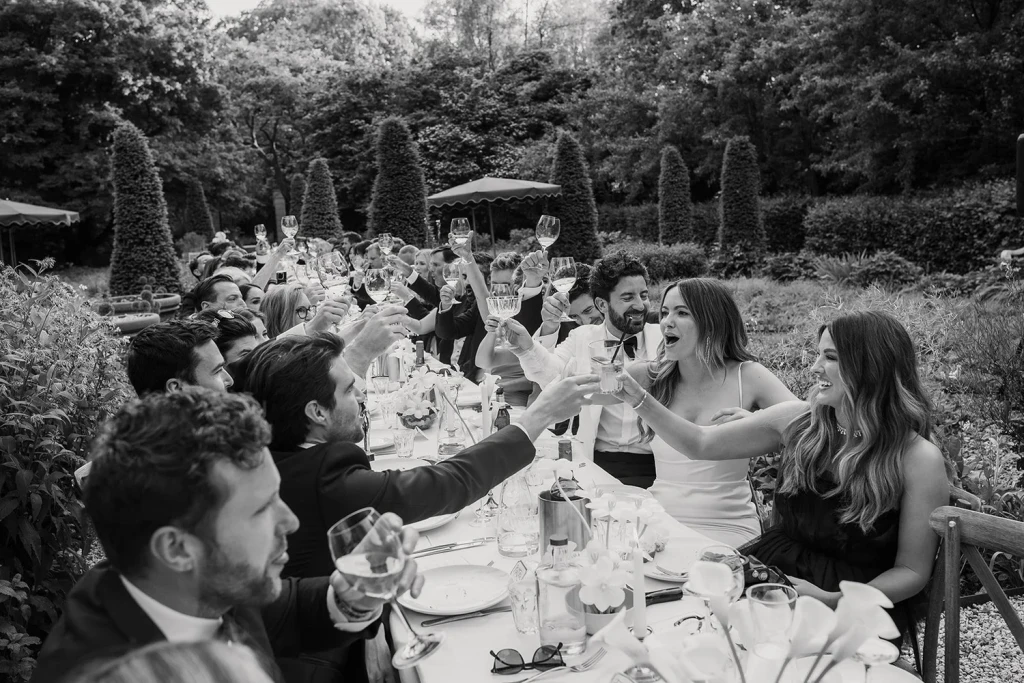The peaceful side of Cinque Terre you didn’t know existed
Cinque Terre and tranquility — it sounds like a true contradictio in terminis. After all, this is one of Italy’s most iconic coastlines, where crowds spill off hiking trails and trains, and every square metre of sea-view real estate is in high demand. And yet, somehow, at La Sosta di Ottone III, we found exactly what we were looking for — calm, space, authenticity.
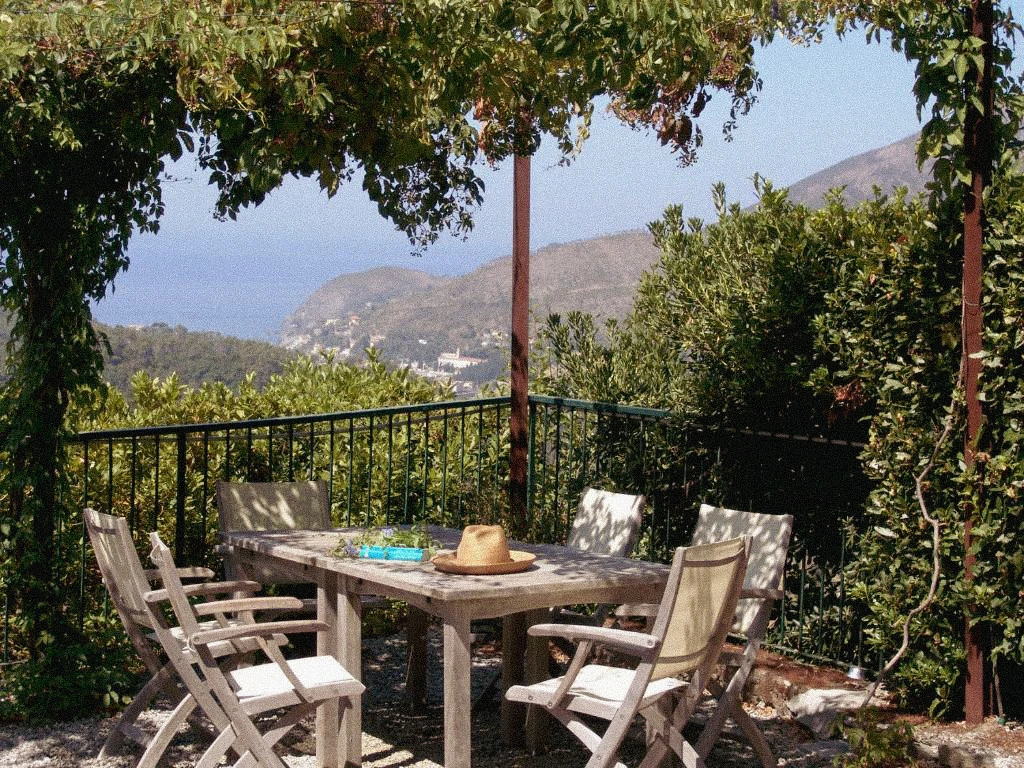 Perched high above the Ligurian coast in the tiny medieval village of Chiesanuova, La Sosta isn’t just a hotel — it feels like a secret. Just six rooms, endless views, and terraced hillsides stacked with olive trees and dry-stone walls, the same ancient structures that earned this area its UNESCO World Heritage status. A place shaped as much by human hands as by nature.
Perched high above the Ligurian coast in the tiny medieval village of Chiesanuova, La Sosta isn’t just a hotel — it feels like a secret. Just six rooms, endless views, and terraced hillsides stacked with olive trees and dry-stone walls, the same ancient structures that earned this area its UNESCO World Heritage status. A place shaped as much by human hands as by nature.
You don’t arrive here by car. There’s no traffic, no noise — just a narrow footpath and a small monorail originally used to haul grapes during harvest. Now, it quietly carries guests (and their suitcases) up through the vines. As we glided toward the house on the La Sosta Express, the sun dipped low over the Levanto Valley, casting golden light across the hills and out to sea. It was the kind of arrival you don’t forget.
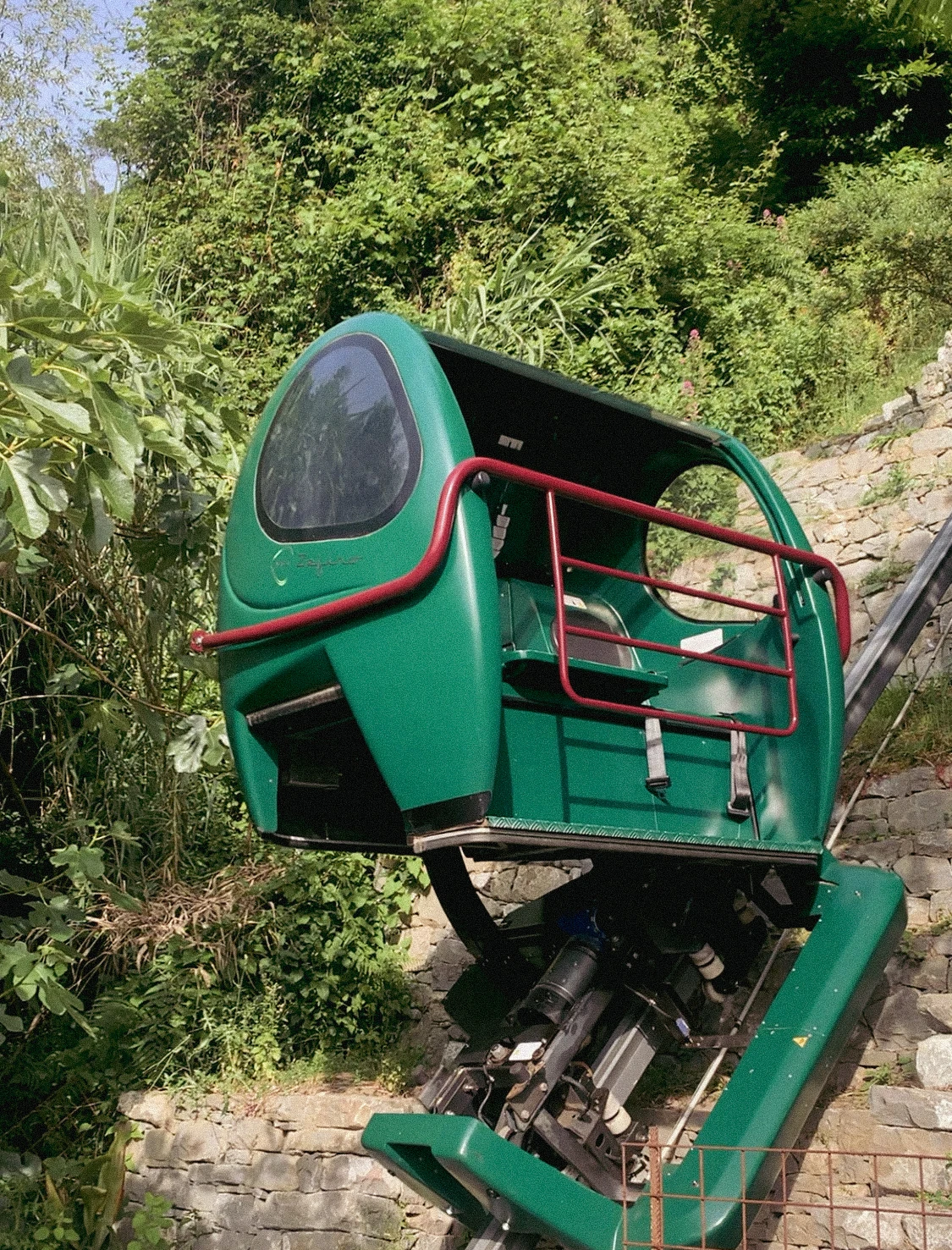
At the top, a glass of natural wine and a plate of local delicacies awaited us on the terrace. It was so quiet, just the occasional church bell, and a breeze off the water.
The house itself is a 16th-century listed building, once part of a tiny rural hamlet. The legend goes that Otto III, Holy Roman Emperor, stayed here in the year 996 as a guest of the Zattera family, en route to Rome to be crowned by his cousin, Pope Gregory V — both of them just sixteen years old. The story inspired the name: La Sosta, meaning “the stopover.”
In 2002, Angela Fenwick and her husband Fabio Graziani became the new custodians of the house. Angela, born in Rome and raised in Canada, had built a successful career in finance in Milan. But this valley had long been her escape — she came often to hike, recharge, and immerse herself in nature. Over time, she fell for the rhythms of this place, the paths no one talked about, the stories hidden in the stones. Eventually they made a leap: to turn the house into something that could be shared.
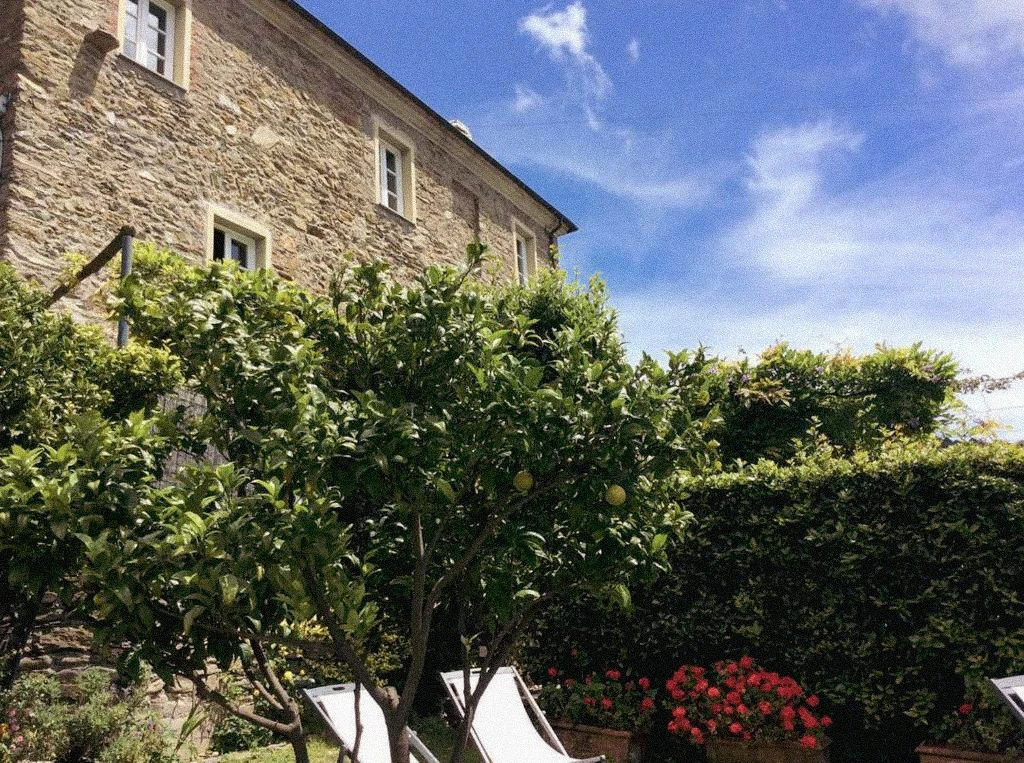
Importantly, the goal was never to over-style or polish away the soul of the place. The house had belonged to one family for generations. Angela and Fabio didn’t want to erase that history — they see themselves as custodians, not owners.
During the renovation, everything was sourced locally. That meant choices were often made by what was available: slate and marble for the floors, lime for the walls. The palette was inspired by the soft, faded hues of the nearby villages — but here, the colours are kept inside. The result is thoughtful, warm, and quietly elegant. There’s Wi-Fi and air conditioning, yes — but also thick stone walls, antique furniture, and views that open wide over the valley.
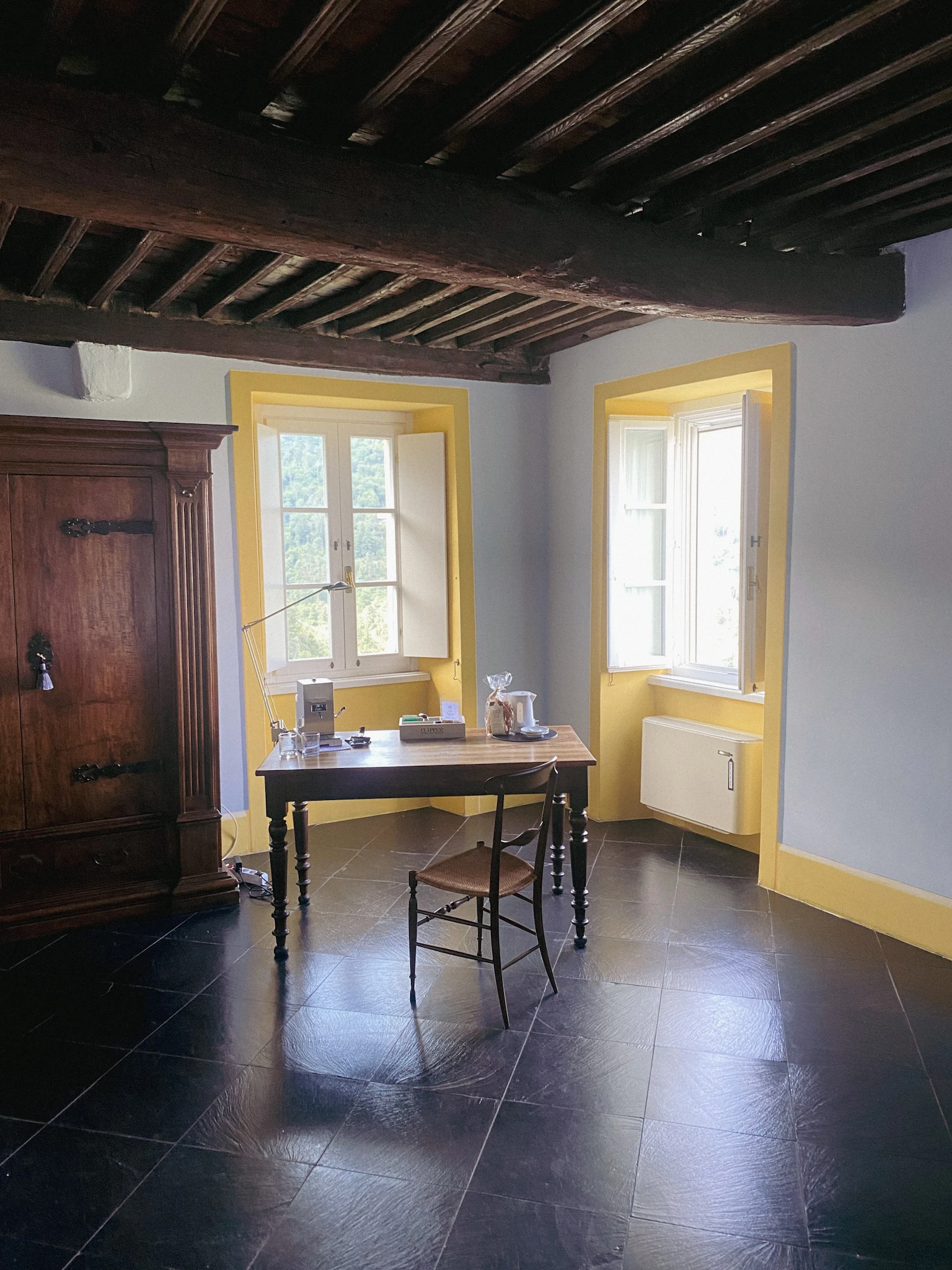 The rooms are simple and individual, each one slightly different, each with a view of the sea or the hills. And downstairs, in the old stone cellar with its elliptical arch and wide slate slabs, dinner is served. The menu changes with the season and reflects La Sosta's connections to local producers and foragers. Think vegetables from nearby gardens, seafood fresh from the coast, Ligurian wines — all prepared with care, never fuss.
The rooms are simple and individual, each one slightly different, each with a view of the sea or the hills. And downstairs, in the old stone cellar with its elliptical arch and wide slate slabs, dinner is served. The menu changes with the season and reflects La Sosta's connections to local producers and foragers. Think vegetables from nearby gardens, seafood fresh from the coast, Ligurian wines — all prepared with care, never fuss.
But for us, the soul of this place lies in the walks. La Soosta's team has charted out the best trails — not the overrun Sentiero Azzurro, but ancient mule tracks that wind through the Levanto Valley and across vine-covered terraces. You pass through villages like Legnaro, Gallona, and Vignana, with just the sound of your steps and the scent of rosemary in the air. Most routes are well-marked, with walking time (not distance) noted on each sign, a subtle nod to the way time flows differently here.
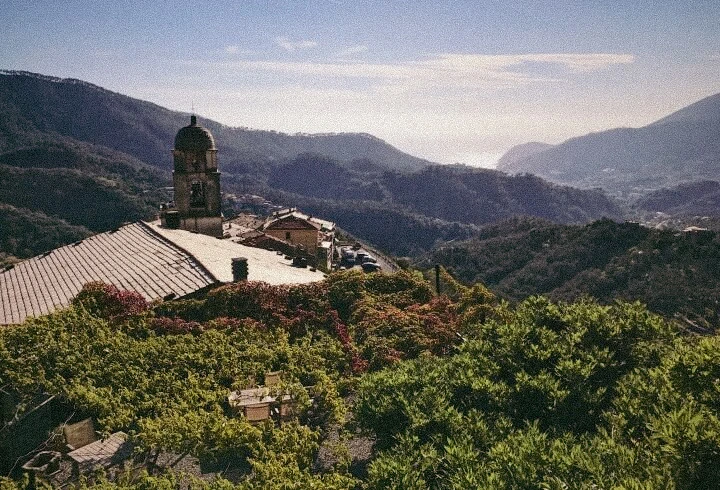 You can do the full loop — a six-hour ramble through forest and farmland — or just a stretch before descending to Levanto for a dip. Or take the ferry back along the coast, past the pastel villages clinging to cliffs. Then return to La Sosta in time for an aperitivo as the sun disappears behind the hills.
You can do the full loop — a six-hour ramble through forest and farmland — or just a stretch before descending to Levanto for a dip. Or take the ferry back along the coast, past the pastel villages clinging to cliffs. Then return to La Sosta in time for an aperitivo as the sun disappears behind the hills.
The landscape here is what truly defines the Cinque Terre — not just the colourful villages, but the terraced hills around them: a human-made agricultural system shaped over centuries with dry-stone walls, built by hand to hold up olive trees and grapevines in impossible terrain. It’s a fragile, living cultural landscape that still depends on the people who walk it, work it, and care for it. That’s what UNESCO recognised when they listed the Cinque Terre — and it’s what Angela and Fabio are preserving, in their own way, at La Sosta.
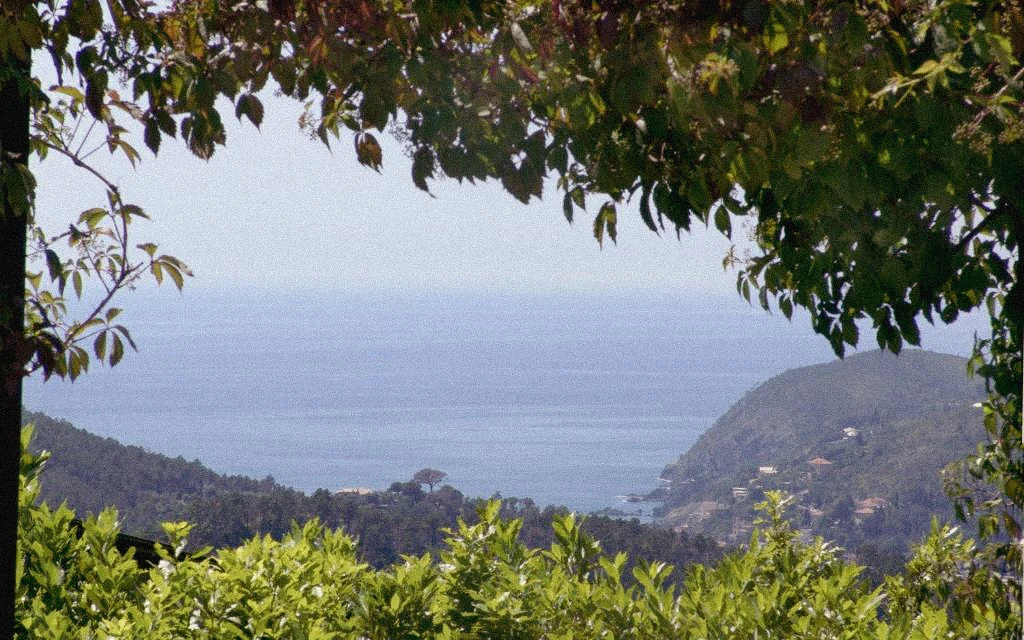
It’s hard to put into words what this place makes you feel. Maybe it’s the luxury of slowness. Or the sense of being far from everything — and yet entirely at home. All I know is this: it’s a place I want to return to, again and again.
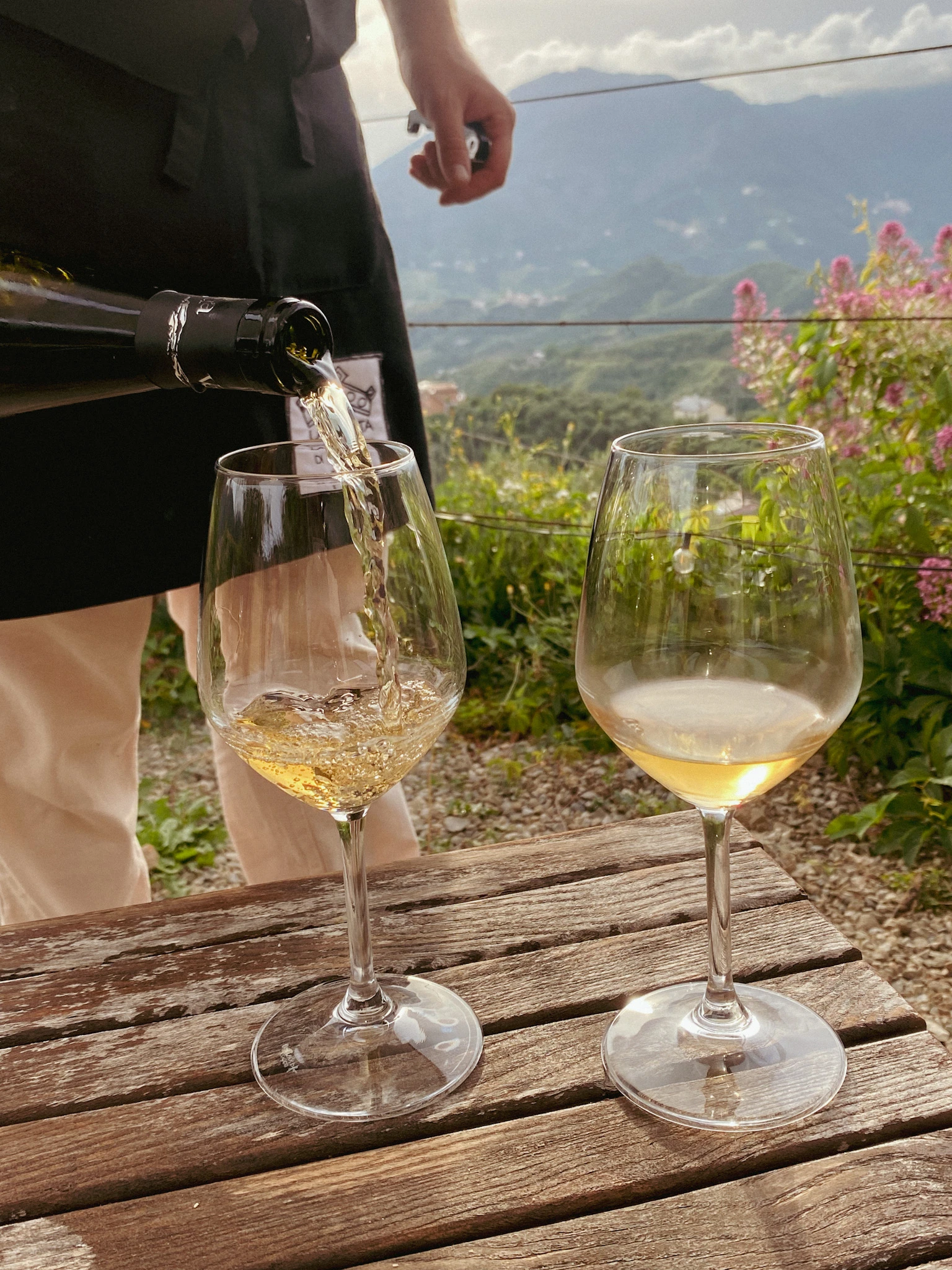
Stay
Shop
I fell in love with the interior design and especially the chairs, but good news, Angela shared with us where to buy them:
F.lli Levaggi: Laboratorio e showroom: via Parma 469 - 16043 Chiavari | www.levaggisedie.it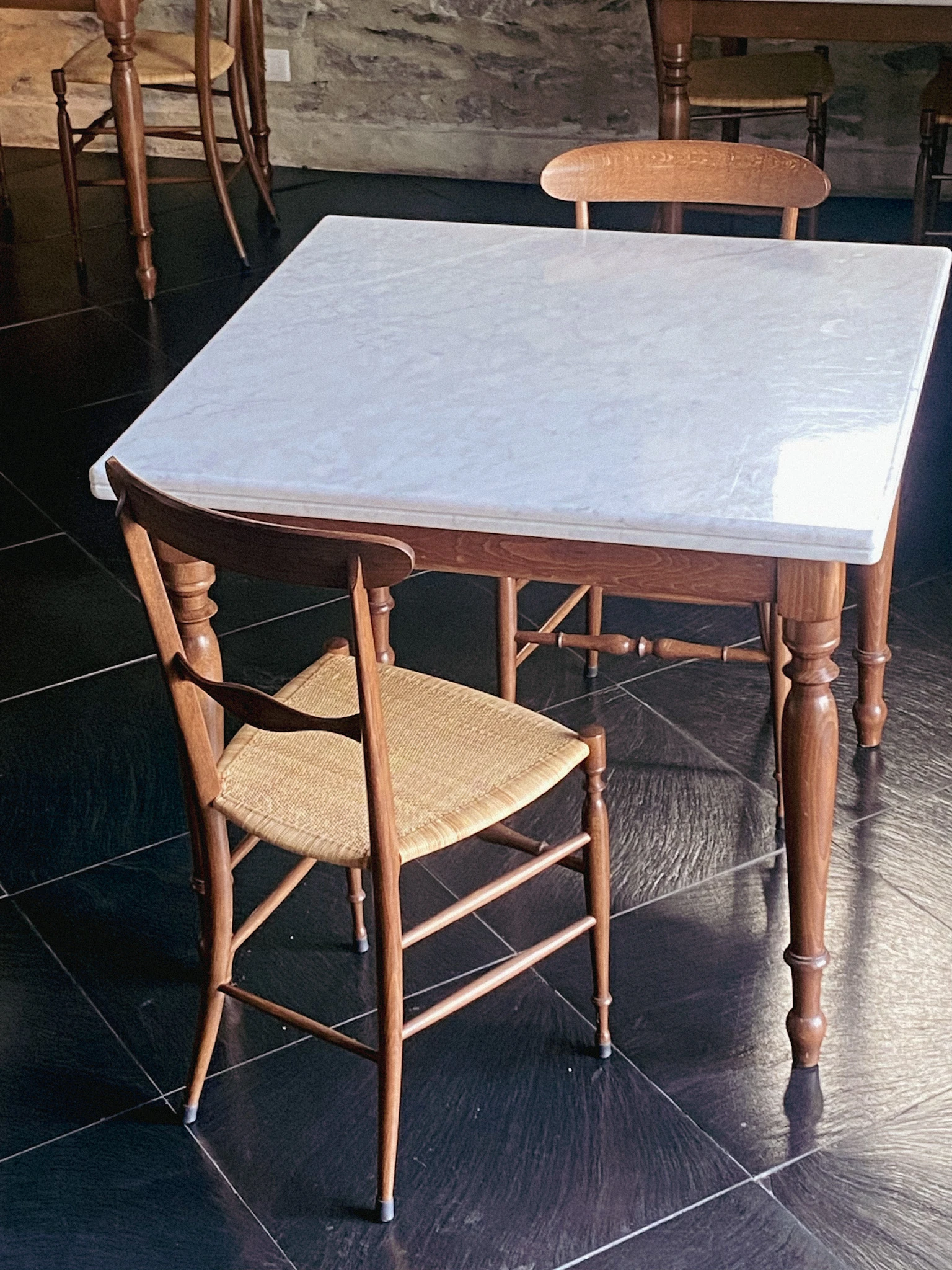
Shop
Sentier Italia: For hiking I always recommend the best Italian hiking shoes, hand crafted in Italy and of course a stylish pair of Friulane for inside: www.sentier-italia.com
